Selling digital products online is hard.
Especially if you don’t have an audience.
But once you know how to do it can become a ridiculously effective passive income generating machine.
I’ve managed to slowly build up a YouTube audience and the digital products I sell help me earn money even while I’m asleep.
In this article, I want to go over and showcase the best platforms to list and sell digital products.
I’ve tried and tested most of them out there and I’ve found these to be the best.
Let’s go.
What is the best platform to sell digital products?
There are so many different e-commerce platforms that let you sell digital products online.
But through my testing I’ve found four that work for very different types of people. Two of them are completely free to start out and two are paid but have ridiculously powerful features and integrations.
So here are my pics for the best platforms to sell digital products:
Payhip – best for beginners.
Shopify – best for selling digital and physical products at the same time through one single platform.
Sellfy – best for subscriptions alongside downloadable digital products.
Podia – best overall (allows for creating and selling online courses, email marketing and creating a community alongside selling digital products).
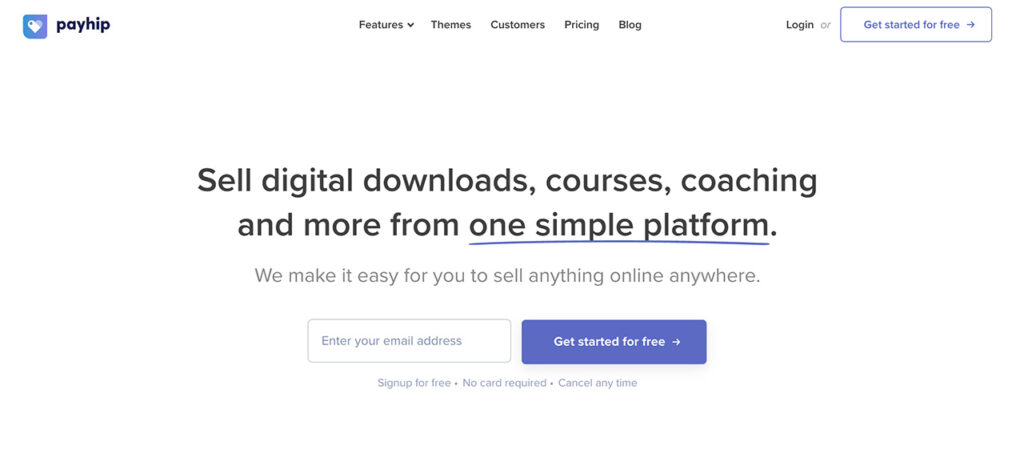
There are 3 pricing options:
- Free – sell unlimited amounts of digital products for a 5% transaction fee on every sale (this plan is perfect for anyone starting out).
- $29 per month – sell unlimited amounts of digital products for a 2.5% transaction fee on every sale.
- $99 per month – sell unlimited amounts of digital products with a 0% transaction fee.
You can view all the pricing options here.
I use Payhip myself to sell my YouTube video course and other digital products like wallpapers.
Before switching to Payhip I used to use Gumroad. It’s a great platform that lets you sell almost unlimited types of digital products but the problem with it was the high fees.
At first, Gumroad used to charge 5% on every sale but once they increased it to 10% I knew I had to make the switch. Keep in mind that this 10% fee doesn’t account for VAT tax, and PayPal or Stripe processing fees.
And Payhip is essentially a reskin on Gumroad. It offers very similar features and has a fee of 5% on each sale.
But still, if you have a large audience and sell big quantities of digital products this fee could add up to a huge amount of money. That’s why Payhip also offers a subscription that lets you get rid of the fee entirely for $99 per month.
At first, it probably won’t make sense to pay a subscription to get rid of the 5% fee but this is a great option to save money if you’ll start selling more digital products for thousands or tens of thousands of dollars per month.
You can also connect your domain name to your Payhip store (like I’ve done with my store.thaomaoh.com domain) which will make your website look a lot more professional.
You can get a cheap domain with Namecheap and if you’re interested in hosting your website I would recommend going with Hostinger (that’s what I use to host this website too).
So what can you sell on Payhip?
- Courses (what I’ve done was upload my YouTube course lesson on YouTube as unlisted videos and then embed them into Payhip. That way you won’t have to pay extra for them to host your course video lessons).
- Anything that can be downloaded: music, ebooks, PDFs, presets, patterns, wallpapers, printables, design assets & more (below I’ve listed a bunch of digital product ideas too).
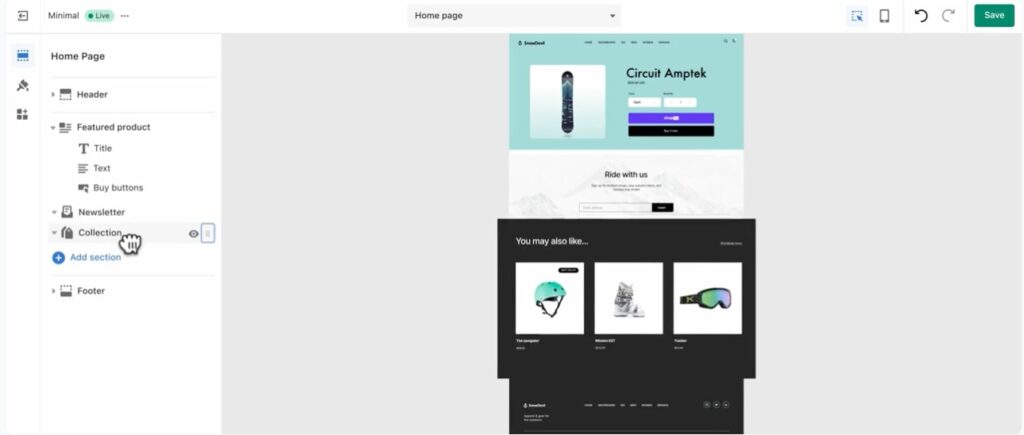
I think Shopify is the best place to sell any kind of products online, not just digital.
The only downside of it that I can think of is that it’s not free.
That’s no big deal if you already have an audience or an online business where you make money with digital products but if you’re a beginner then that cost may be annoying to swallow.
Shopify starts at $24/month but you can get a free trial to test if it’s the right software for you.
Shopify is an e-commerce platform and it has an “app store” where you can download and install various apps that add integrations onto the base layer of the software.
So you could add an app that helps you sell digital products, do print-on-demand, do drop shipping, and many other things.
You can read my full Shopify review here.
Once you create your Shopify store you’ll be able to connect a domain name to it (I recommend Namecheap for getting a cheap domain) and customize your store however you want.
There are a variety of free and paid themes that you can choose from to make your store look incredibly professional.
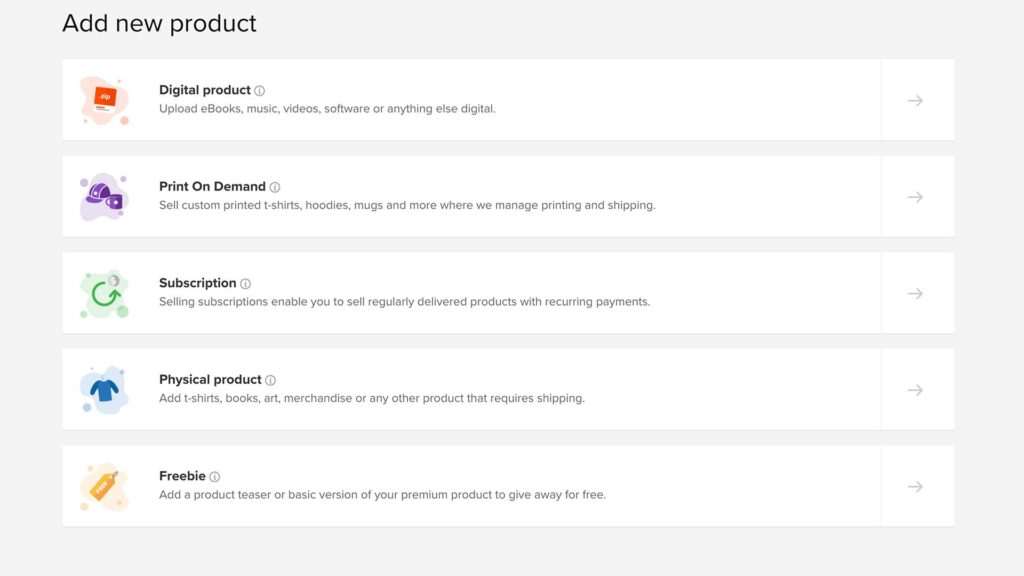
Unlike Shopify, Sellfy focuses a lot more on digital products.
This is the second platform out of all of these that are not free to start out with. But there is a 14-day free trial (no credit card required) that you can use to test out if Sellfy is right for you.
In addition to letting you list any type of digital product Sellfy also sets up a beautiful-looking website where all your products are listed, automatically allows customers to enter their email and subscribe to upcoming updates from you, lets you create discount coupons and sales as well as upsell your customers.
It’s the best all-in-one platform for selling digital products.
Sellfy also integrates with many services like Patreon, Google Analytics, and Zapier which enables some cool automation that can save you a lot of time long-term.
If you’re a beginner you can choose to ignore all the advanced stuff that’s neatly tucked away, like email marketing, but if you want you can do a lot of fun and powerful stuff with Sellfy.
So what can you sell through Sellfy?
There are 5 main categories:
- Digital products
- Print-on-demand
- Subscription
- Physical product
- And freebie
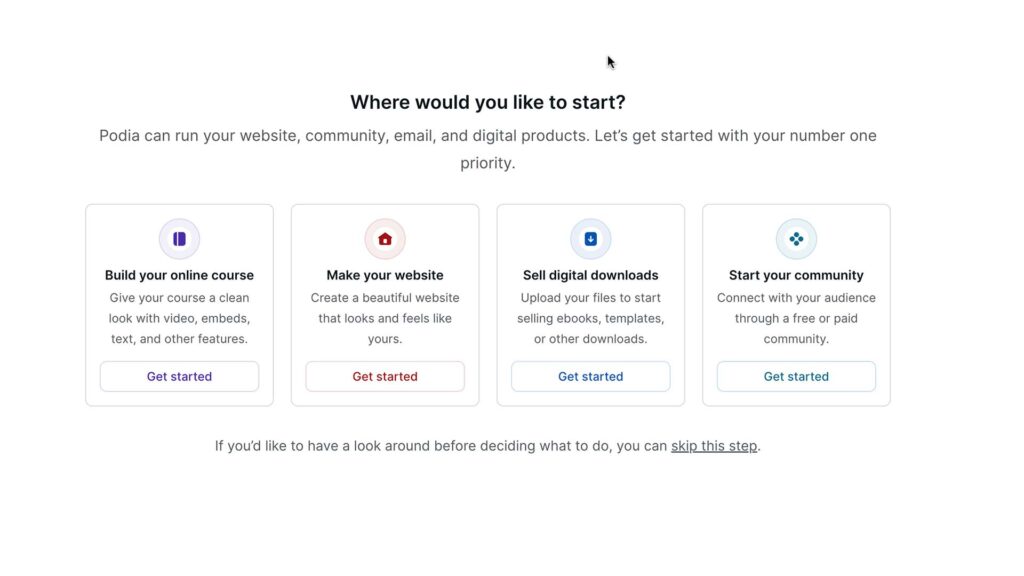
Podia aims to be the all-in-one platform when it comes to selling and marketing digital products to your audience.
They have everything that you could possibly need integrated into one platform – email marketing, the ability to create a course, create a professional-looking website, sell digital downloads, and build a community.
You can also try Podia for free which will allow you to list one digital product for sale as well as draft courses, and create your website. However, the free plan has an 8% fee on every sale you make.
Without the free plan, there are two paid options:
Mover ($33/month) and Shaker ($75/month).
The Mover plan allows you to upload and sell unlimited amounts of digital products, coaching products, and courses. This plan also removes the 8% fee on every sale allowing you to sell digital products with completely 0% platform fees (this can be a huge deal if you’re selling large quantities or expensive digital products).
The Shaker plan adds everything that the Mover plan does in addition to the ability to add third-party code to your website as well as set up an affiliate program for your digital products and courses.
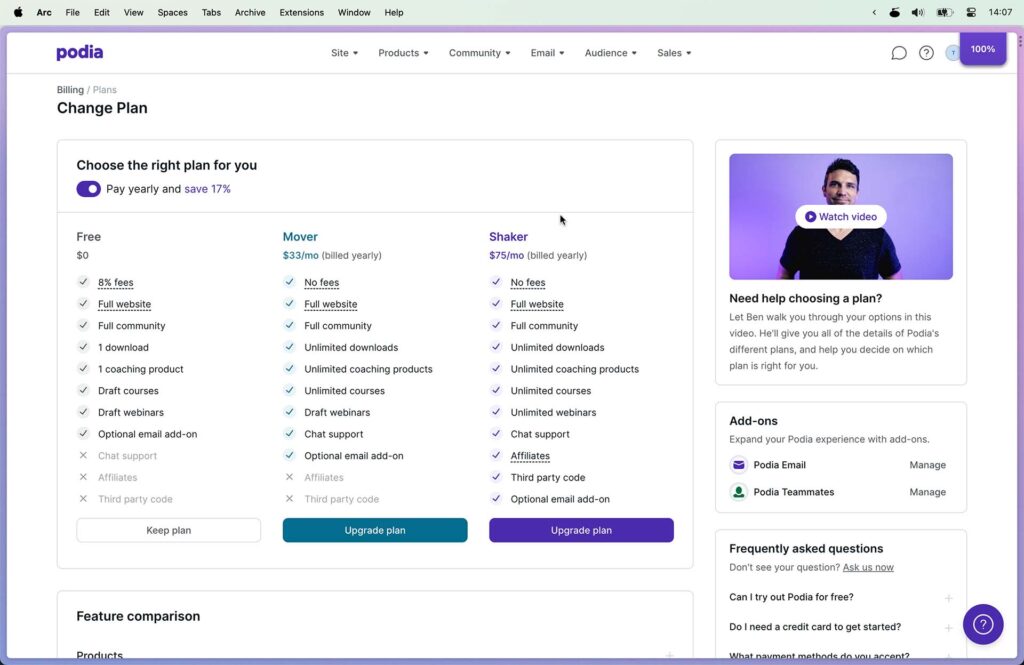
I think the Mover plan is more than enough for 90% of people.
Once your customer base grows larger, setting up an affiliate program that allows them to share your products and get a commission on every sale is something that you could think of. But in the beginning, it wouldn’t make sense to do so.
That’s why most of the utility of the Shaker plan wouldn’t be useful if you’re a beginner at selling digital products.
How To Sell Digital Products to make money?
What is the best digital content to sell?
I sell my YouTube video course among other things like a free Google Sheets finance tracker or a desktop wallpaper pack but there are so many other things that you could sell as digital products.
The key thing to keep in mind when thinking of which digital product to sell is whether it solves your customer’s problem.
Don’t create a product that no one wants. Look at your audience’s main pain points and design a product around them. Don’t look for digital product ideas, look for problems that can be solved with them.
And if you don’t have an audience then building one is the next best thing that you can do.
With all that said, here are some digital product ideas:
- Ebooks: Create and sell digital books, and quick PDF guides on various topics.
- Online Courses: Teach someone you wish you knew how to do 5 years ago (that’s what I do with my courses).
- AirBnb Welcome Book Templates: Design welcome books for AirBnb hosts.
- Printable Planners: Design downloadable planners for productivity and organization.
- Stock Photos: List high-quality stock photos on websites like Shutterstock.
- Icons and Graphics: Design custom icons, graphics, and vector images.
- Fonts: Create unique fonts for designers and typographers.
- Website Themes: Develop WordPress Elementor and Framer themes and templates.
- Mobile App Templates: Design templates for mobile app development.
- Digital Art: Sell digital paintings, illustrations, and drawings.
- Photography Presets: Offer presets for photo editing software.
- Editing Presets: Create Premiere Pro, DaVinci Resolve or Final Cut Pro presets for video editors.
- 3D Models: Create and sell (or license) 3D models for games or 3D printing.
- Sound Effects: Produce sound effects (or a sound effects pack) for use in YouTube videos and games.
- Music Tracks: Compose and sell royalty-free music tracks.
- Video Templates: Craft templates for video intros, outros, and transitions.
- eCommerce Templates: Create templates for online stores (Such as Shopify or Webflow themes).
- Infographics: Design informative and visually appealing infographics.
- Social Media Templates: Offer templates for social media posts.
- Printable Art: Sell digital art for home decor such as printable wallpapers, stickers, book marks, and wall art prints (these digital products sell the best on Etsy).
- Webinars: Host webinars on various subjects and sell access.
- Website Scripts: Develop scripts and plugins for websites.
- eBooks for Kids: Write and illustrate children’s ebooks (could also be coloring books with vector images inside).
- Online Workshops: Teach specific skills through live workshops.
- Templates for Resumes: Create resume and CV templates (can be done with Canva).
- Language Learning Materials: Offer language courses and resources.
- Travel Guides: Create digital travel guides for specific destinations or your home city/country.
- Financial Spreadsheets: Design budget and financial planning templates.
- Printable Games: Create printable puzzles, board games, and quizzes.
- Fitness Programs: Develop digital workout and fitness programs and sell them as downloadable PDFs.
- Recipe Books: Create digital cookbooks with recipes and meal plans.
- Stock Videos: Sell video clips and footage for various uses (can be done on sites like Shutterstock or Adobe Stock).
- Online Coaching: Offer personalized coaching sessions for things you’re knowledgeable about.
- Self-Help Journals: Create digital journals for personal development.
- Email Templates: Design email templates for marketing campaigns.
- Printable Party Decorations: Offer digital party decoration sets.
- Travel Itinerary Templates: Create downloadable travel plans.
- eSports Guides: Offer guides for competitive gaming.
- T-shirt Designs: Create designs for custom apparel (could be sold with print-on-demand on websites like Redbubble or Shopify).
- Digital Marketing Templates: Provide templates for online marketing materials.
- Resume Review Services: Offer resume and CV review services.
- Printable Wedding Invitations: Design digital wedding invitations.
- Coding Courses: Teach coding and programming languages in an interactive way.
- Virtual Assistant Services: Provide digital administrative support.
Thanks for reading 👋.
I’ll leave you with a few resources to help you grow a one-person online business from scratch: